Dreaming of turning your passion into a career? My journey from New York to Australia transformed that dream into reality. As an underwater photographer on the Great Barrier Reef, I’ve experienced the unparalleled beauty of this natural wonder daily. Cairns and Port Douglas, are a major tourist hub due to the GBR’s proximity, which offered the perfect setting to learn. It’s a renowned destination where many come to explore the reef, a World Heritage-listed natural wonder. Here, the thriving underwater photography scene promised the chance to develop my skills and career without the initial need for my own gear.
Your Role as the Photographer:
As the boat’s underwater photographer, your mission is to capture stunning images of guests as they dive and snorkel. You’re also tasked with photographing guests on land as they board, enjoy their time on the boat or pontoon, and even on the helicopter pad, should there be one. Your goal is to snap as many memorable photos throughout the day for guests to purchase as keepsakes of their journey to the Great Barrier Reef. For those interested in a career in underwater photography, stay tuned for a deeper dive into the daily responsibilities. My five years with Calypso Reef Cruises in Port Douglas offered me a wealth of experience, showing that while each company has its nuances, the core of the job remains consistent. Here’s a glimpse into what a typical day entails, working on the Great Barrier Reef as an underwater photographer.

Morning Prep:
The day kicks off around 7:00-7:30 am, beginning with equipment checks. Ensuring both dry and underwater cameras are ready, I format memory cards, check battery levels, and clean the housing dome. I use a microfiber towel to get rid of any fingerprints or dust that is on the dome. At Calypso, we had Nauticam housings for the cameras. Nauticam is my personal brand of choice, they are known for their reliability and come with a sensor alarm that I would test every morning to prevent water damage. Strobe checks are next, crucial for capturing vibrant underwater photos. Cleaning the o-rings, cords, and any other components requiring maintenance is also part of my routine. Maintenance is critical because ignoring it can result in equipment malfunction and financial loss for the company.
Setting Up:
After setting up the cameras, I prepare the computer for the day by creating a new folder in Lightroom and clearing the previous day’s photos (though they remain saved on the computer). I organize the day’s photos in my preferred method. Next, I address emails from customers who may have missed viewing their photos or lost their USB, sending them their requested images. Despite the time it takes, especially after days off, responding to these emails is a crucial part of our job.
Dive Gear and Plan:
After equipment setup, I ready my dive gear, keeping an eye on the weather to plan the day’s shoot. Being the sole photographer on Calypso, I have the flexibility to manage my schedule, balancing underwater and dry photography. With other companies, this will vary.
Boarding Photos:
As boarding starts, I step outside to capture each customer’s boarding photo in front of the boat. While some may decline, I explain it’s for safety—to have a record in case of emergencies, which usually convinces most. This approach is especially helpful on busy days when capturing everyone in the water isn’t feasible, ensuring everyone has the option to purchase a memory of their trip even if they missed out on water photos. Once the boarding photos are done we begin our trip to the reef and start the morning brief. This is when the photographer introduces themselves to the passengers, explaining their role, the services provided, and offering tips on how to pose for the most flattering photographs.
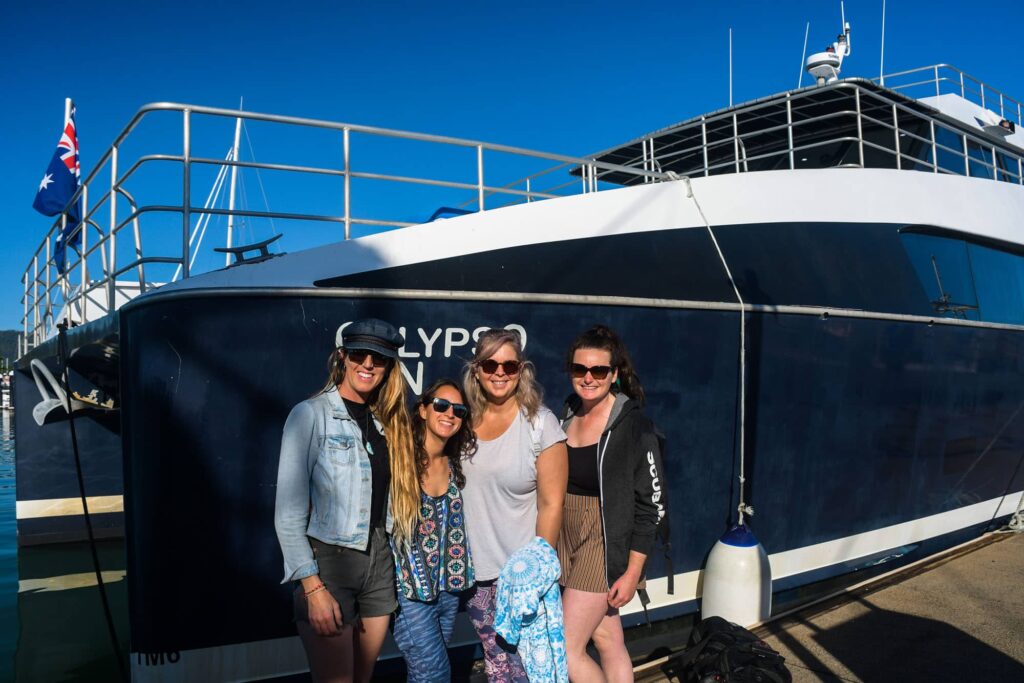
The Trip to the Reef:
The journey from Cairns/Port Douglas to the reef takes roughly 1.5 hours, a period I use to edit morning boarding photos, respond to emails, talk with customers, and handle rental cameras and sales of waterproof phone cases. I’m also on deck watch. The boat ride often becomes choppy in winter, leading to seasickness among passengers. Being part of the crew means we’re all hands on deck for anyone feeling seasick, helping them out to get some air, fetching water or ice, or dealing with those not-so-fun sickness bags. It’s all about making sure everyone’s as comfy as possible while we cruise to the reef.
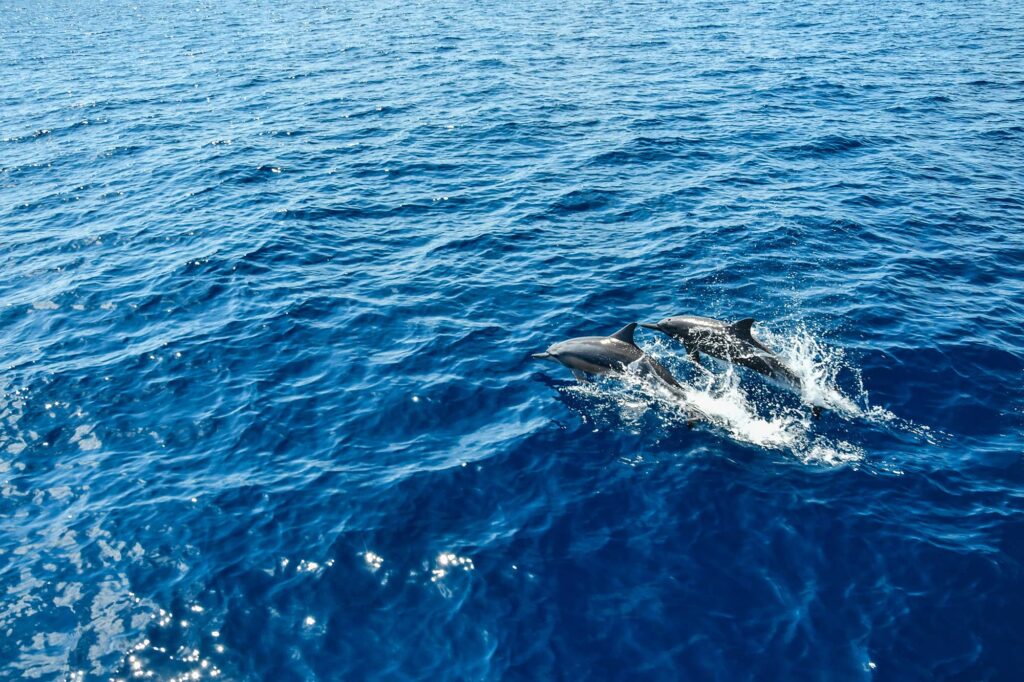
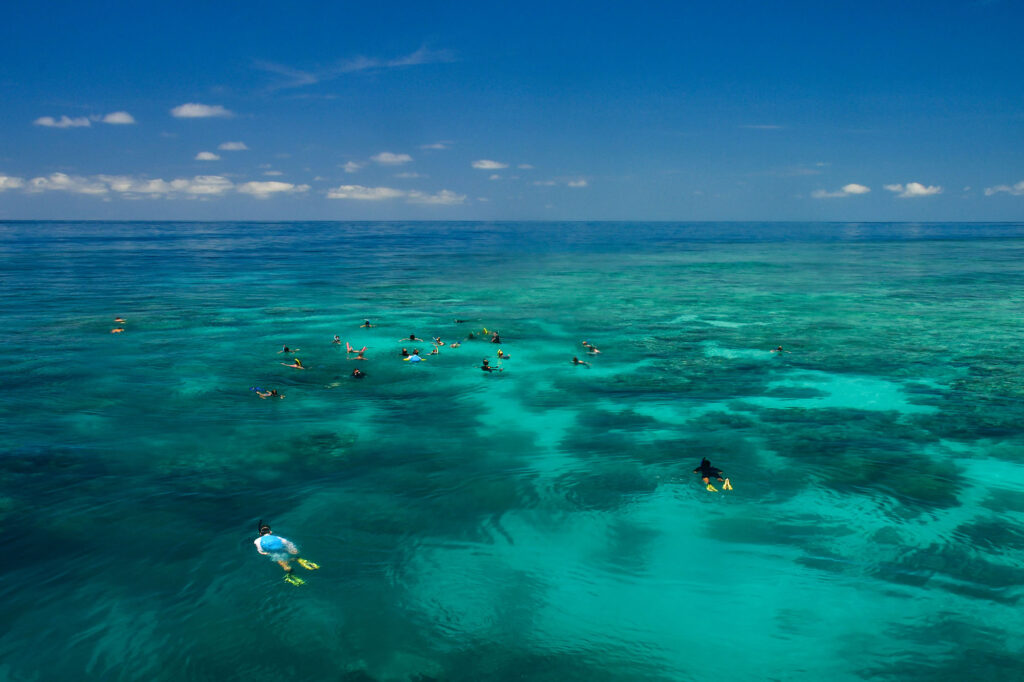
You’ve Arrived at the Reef:
Upon reaching the reef, I dive in quickly to start photographing. Time is of the essence, as some passengers will only be in the water for a short amount of time. My goal is to capture as many guests as possible, swiftly moving between snorkelers and divers. It’s a challenge to keep track of who’s been photographed, especially during stinger suit season when everyone looks alike. I often remind passengers during the morning brief to signal me for photos to ensure I don’t miss anyone. You can’t read people’s minds so tell them to wave you down for a photo.
In Far North Queensland, the weather is unpredictable, which means you need to be quick to change your camera settings to correctly expose for the amount of sunlight. This is why I shoot manual, if you don’t know how to shoot manual then I strongly recommend you go learn that right now. Once you understand shooting in manual mode it becomes second nature. This is crucial not just for photographing guests but also for capturing the vibrant marine life and the reef itself. Memorable sightings, like turtles, mantas, and whales, are invaluable for marketing and conservation efforts. They play a significant role in promoting and protecting the Great Barrier Reef through contributions to programs like the Great Barrier Reef Census and Eye On The Reef. Learn more about these programs here:
Great Reef Census: https://greatreefcensus.org/
Eye on the Reef: https://eotr.gbrmpa.gov.au/
Let’s not forget the cool selfies you can take while underwater! One of the best things about being the underwater photographer for the day is that when you see something cool you can capture it. Depending on the company they might let you post your photos to your socials. But you need to be aware that you do not own the copyright to these images when you use the company’s camera.
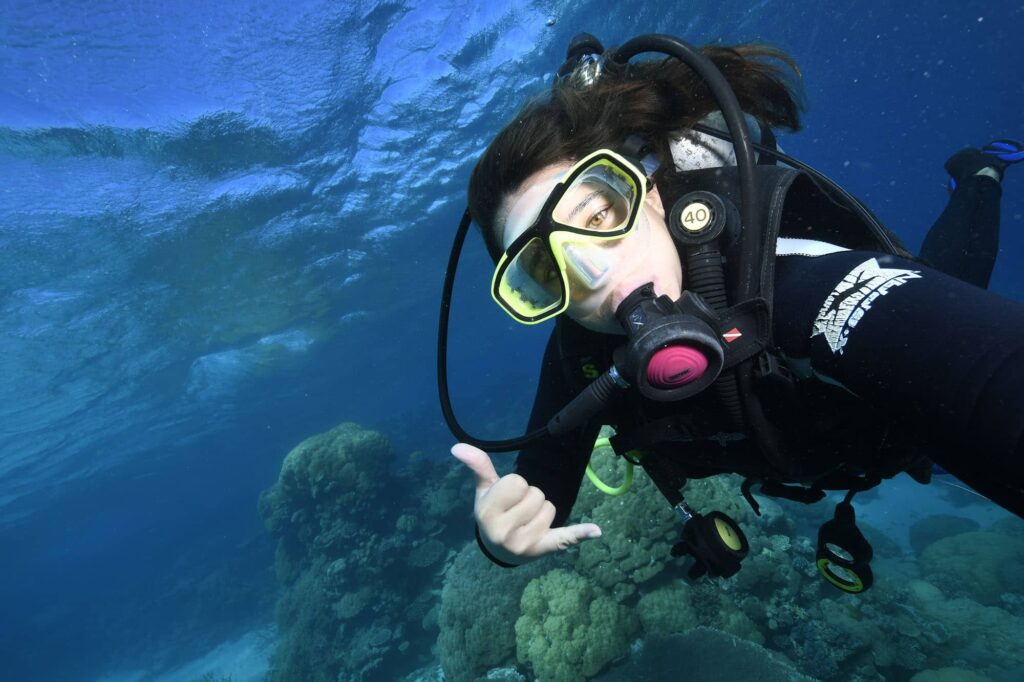
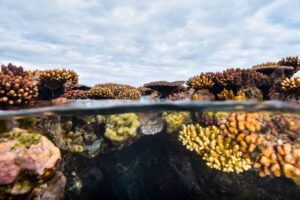

Taking Photos People Want To Buy:
As the underwater photographer on the Great Barrier Reef for the day, you will typically be in the water for 2 sites, or at a pontoon for the first couple hours. It’s your job to get as many different photos of as many different people as you can. I always told the people I trained to try and get your subject in front of the reef. People want to buy a photo of themselves snorkeling or diving on the great barrier reef, not in the blue water which looks like they can be anywhere in the world. You will have better sales when the reef is in the background trust me on this.
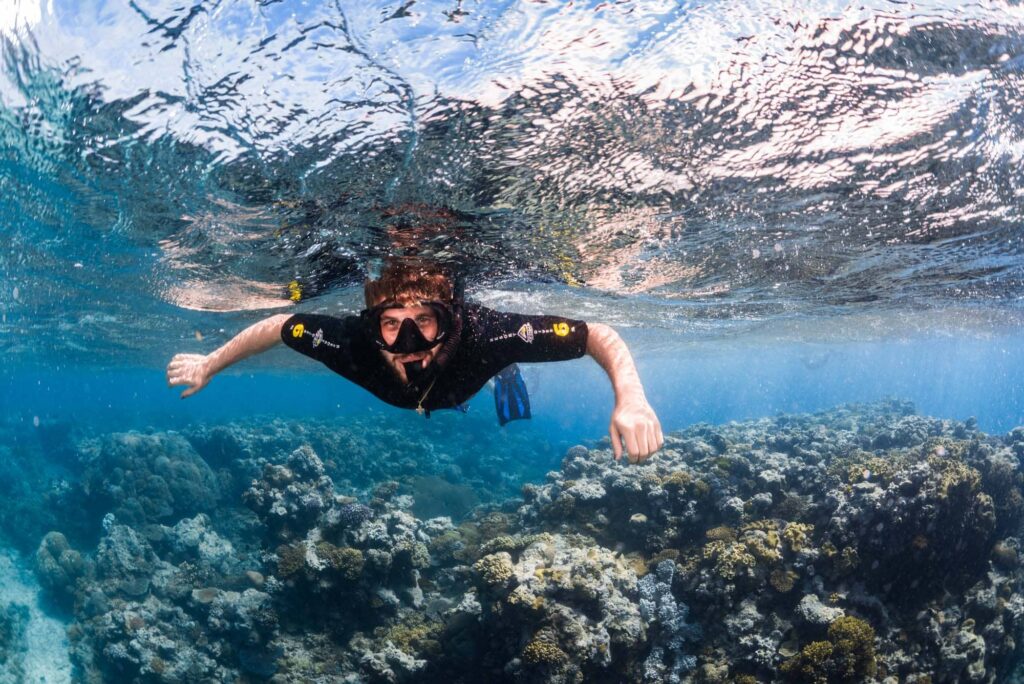
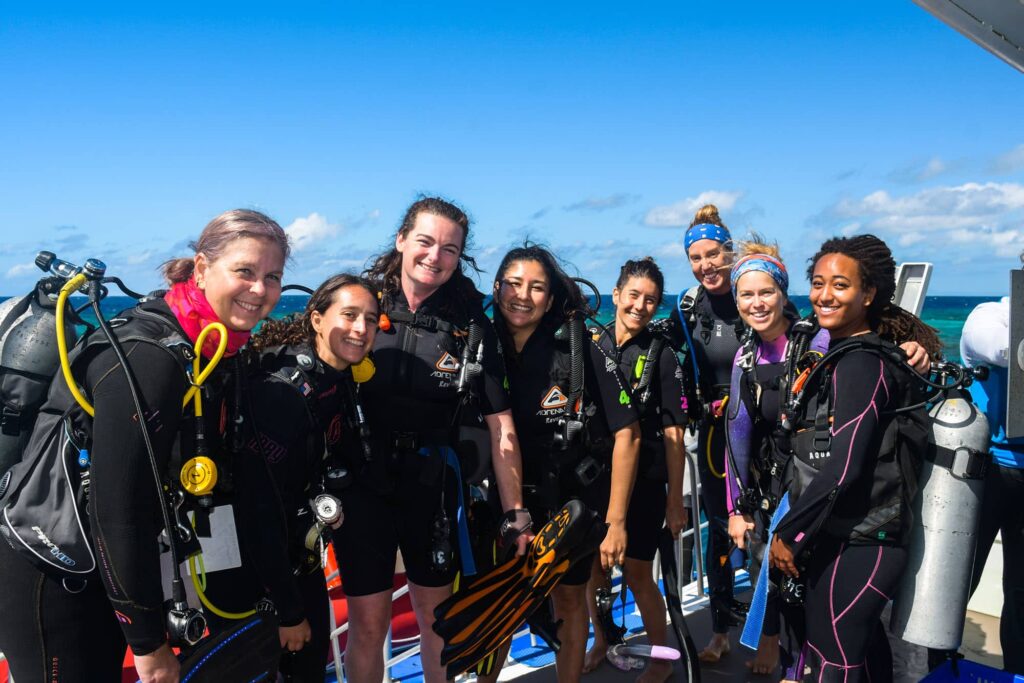

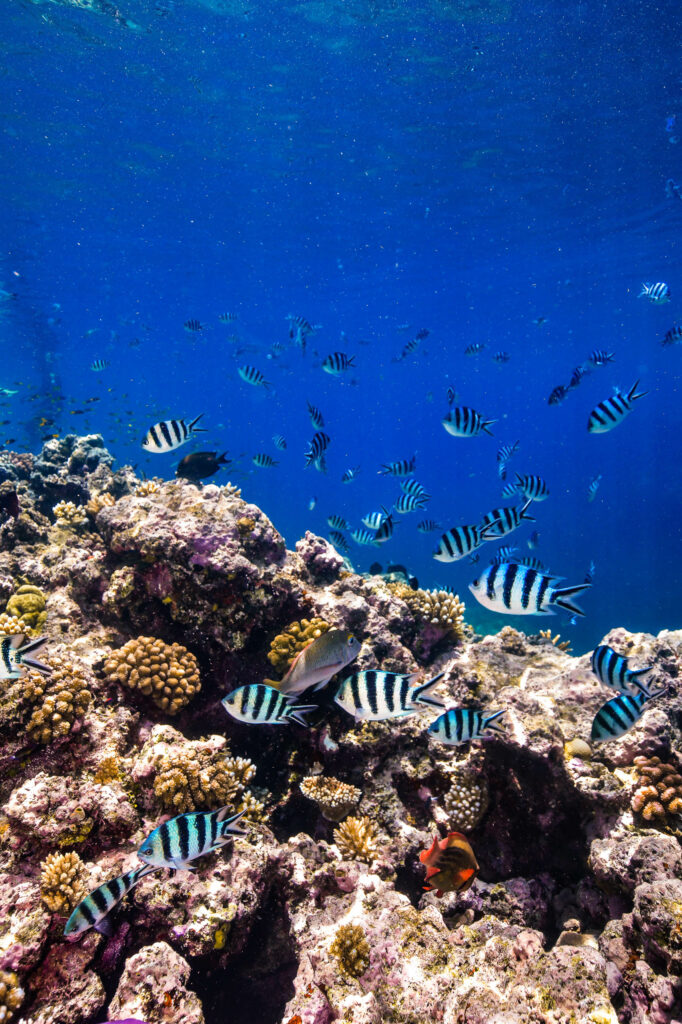
Your Health & Safety Comes First:
Being an underwater photographer can take a toll on your ears. After five years in the role, I’ve experienced barotrauma and other ear issues due to the constant depth changes while diving. The job requires moving between shallow waters for snorkelers and deeper areas for divers, often going down to 12-15 meters. While I aim to stay in shallower waters where the light and reef look best, sometimes it doesn’t always work out that way. However, it’s crucial to prioritize your health and not compromise your ear’s safety for a photo. Always remember that your well-being is paramount!
Out Of The Water:
After finishing your underwater shots as the underwater photographer on the Great Barrier Reef, it’s time to take care of your gear and yourself. Start by rinsing your camera in fresh water, turning it off, and pressing each button to wash away salt—this is crucial to avoid sticky, unresponsive buttons and potential repairs. Next, take a shower, get dressed, and dry and disassemble your camera housing. Then, it’s onto editing in Lightroom, where you’ll likely have hundreds of photos to go through quickly, often in less than an hour before passengers return. Utilizing Lightroom presets can streamline this process, allowing for efficient batch editing. Familiarizing yourself with Lightroom’s develop module is highly recommended to enhance your workflow.
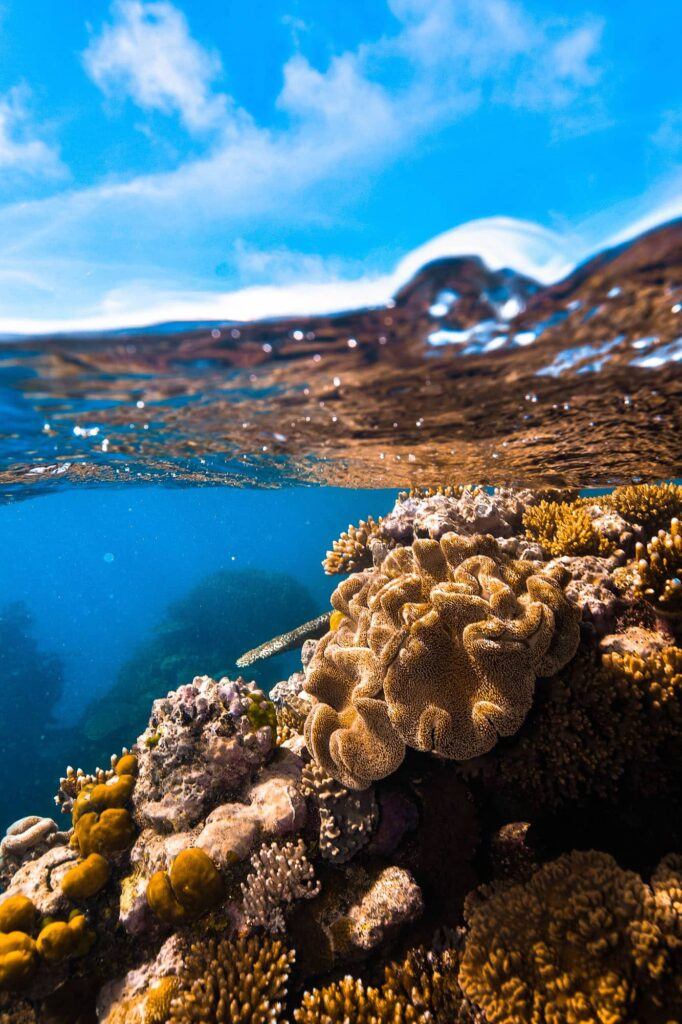

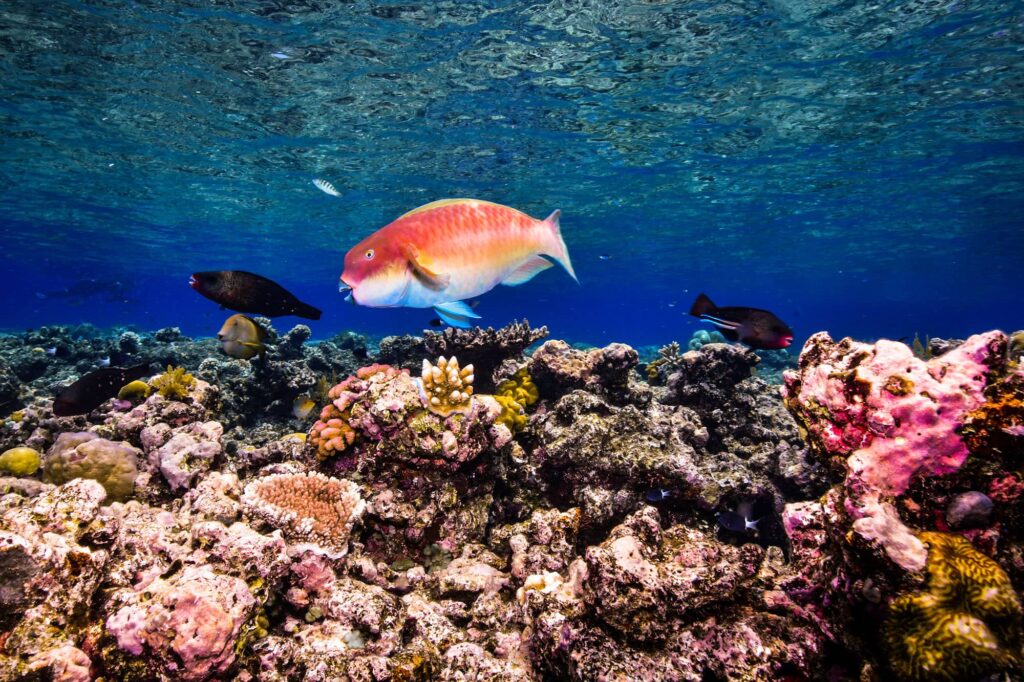

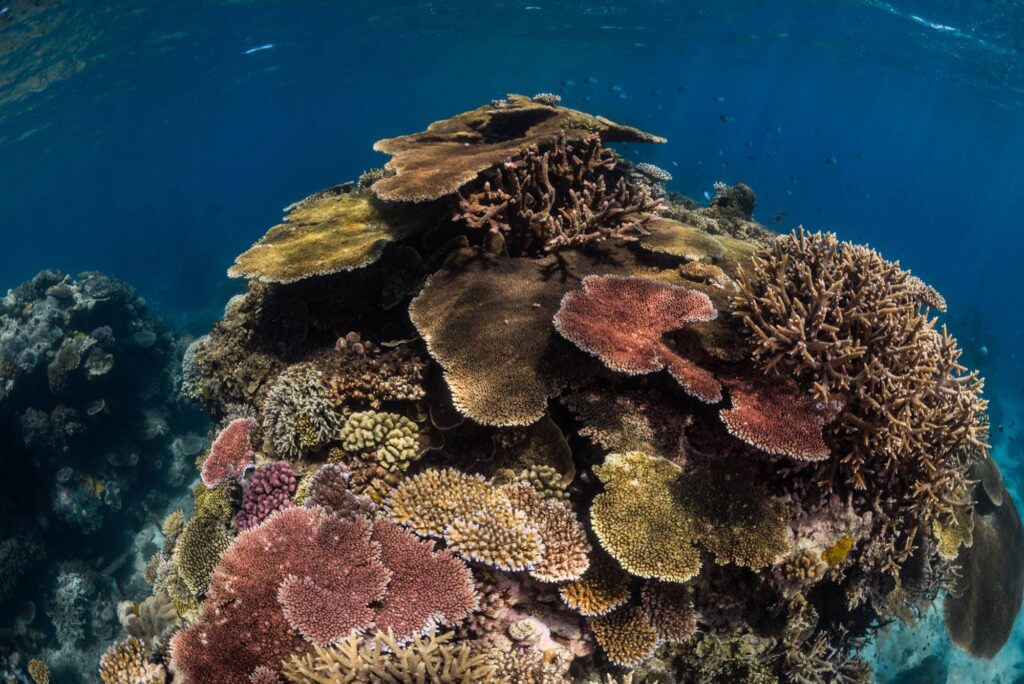
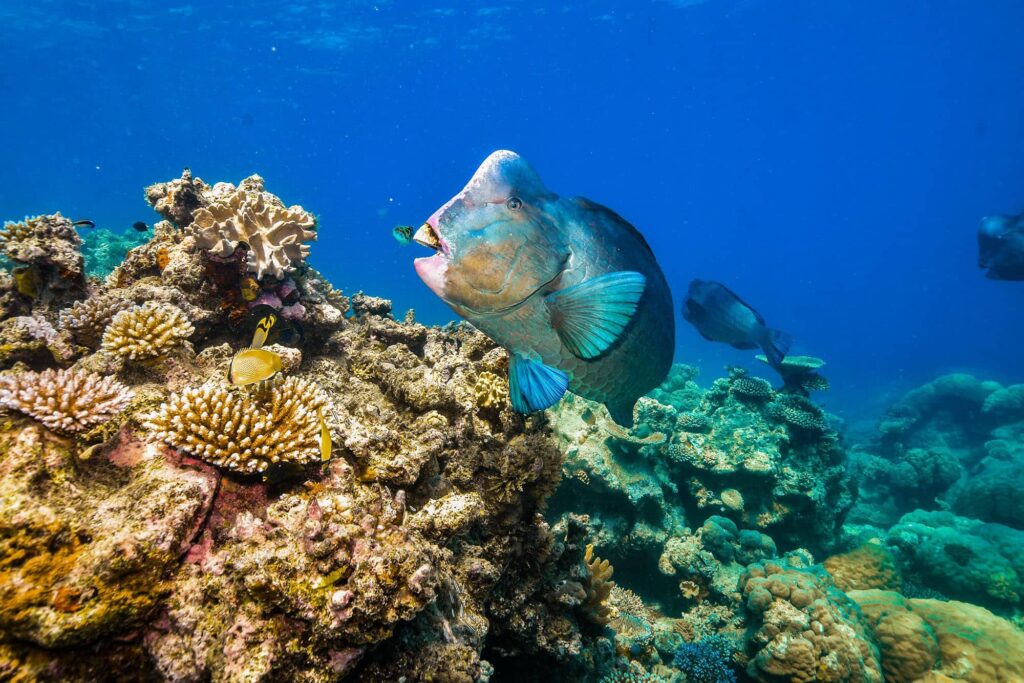
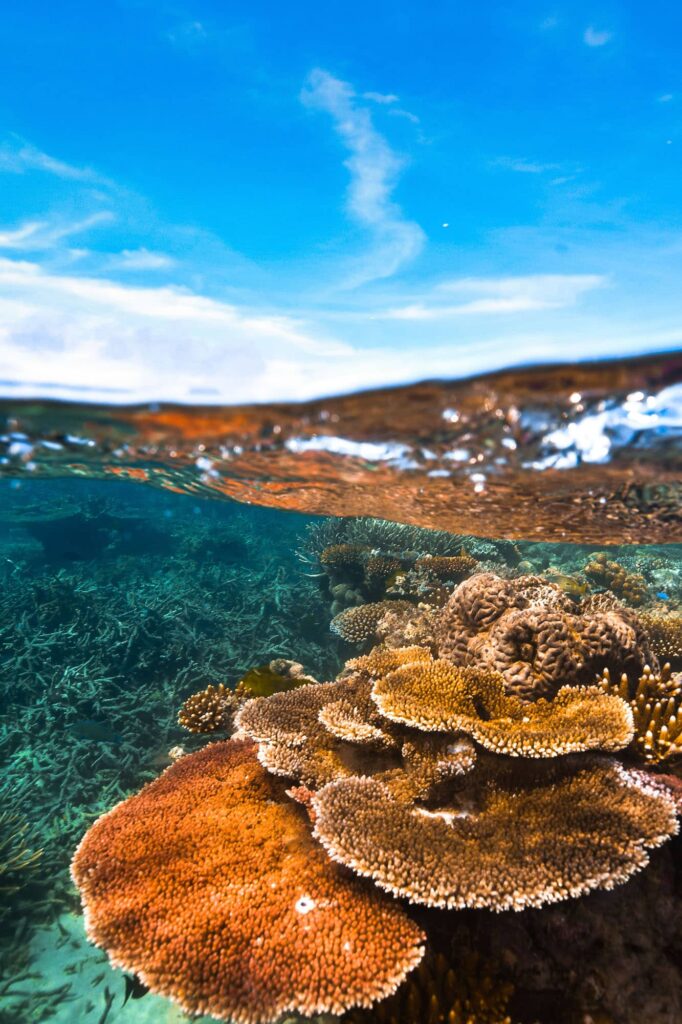
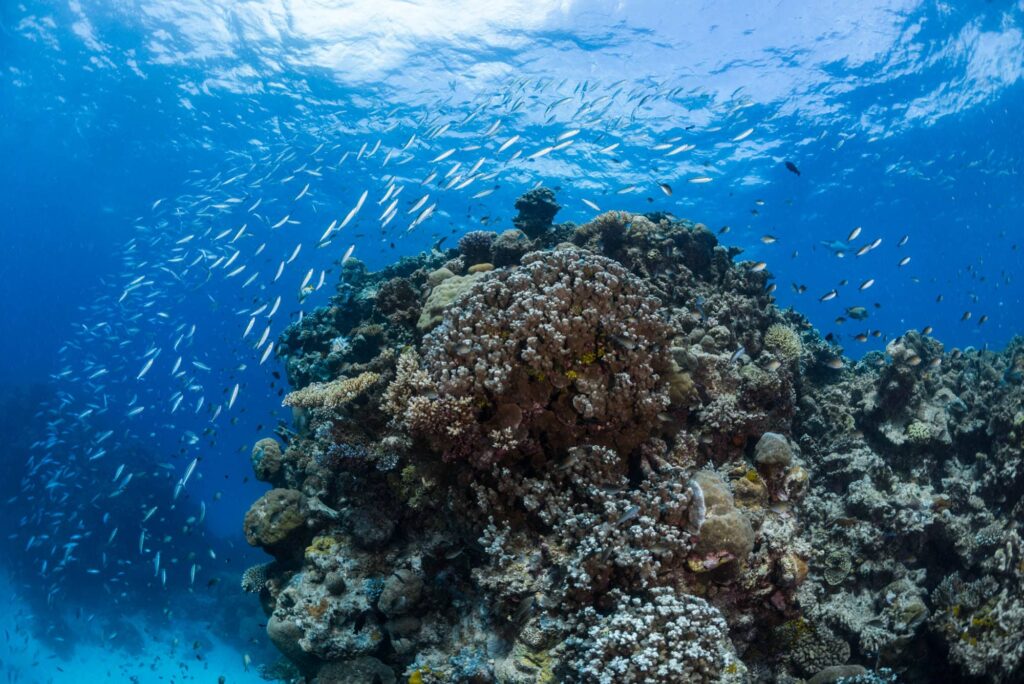
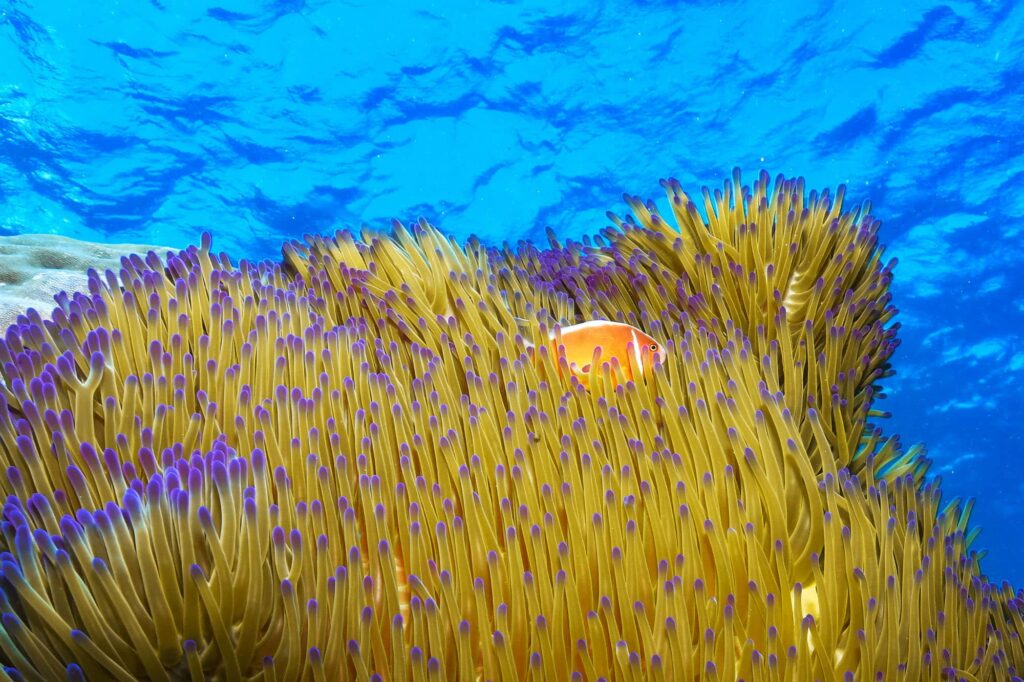
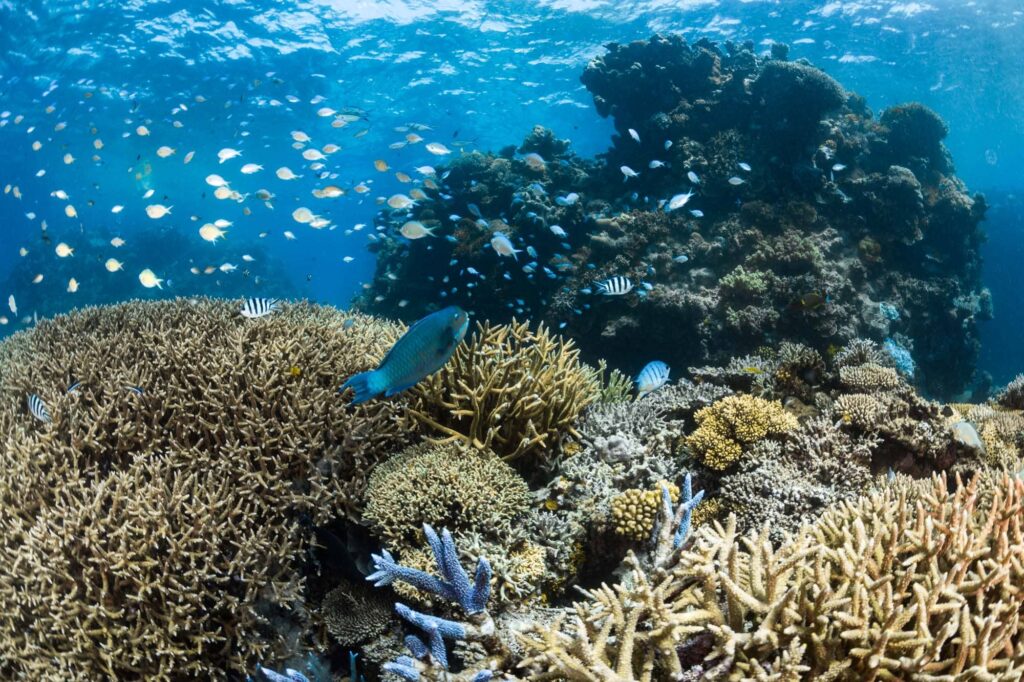
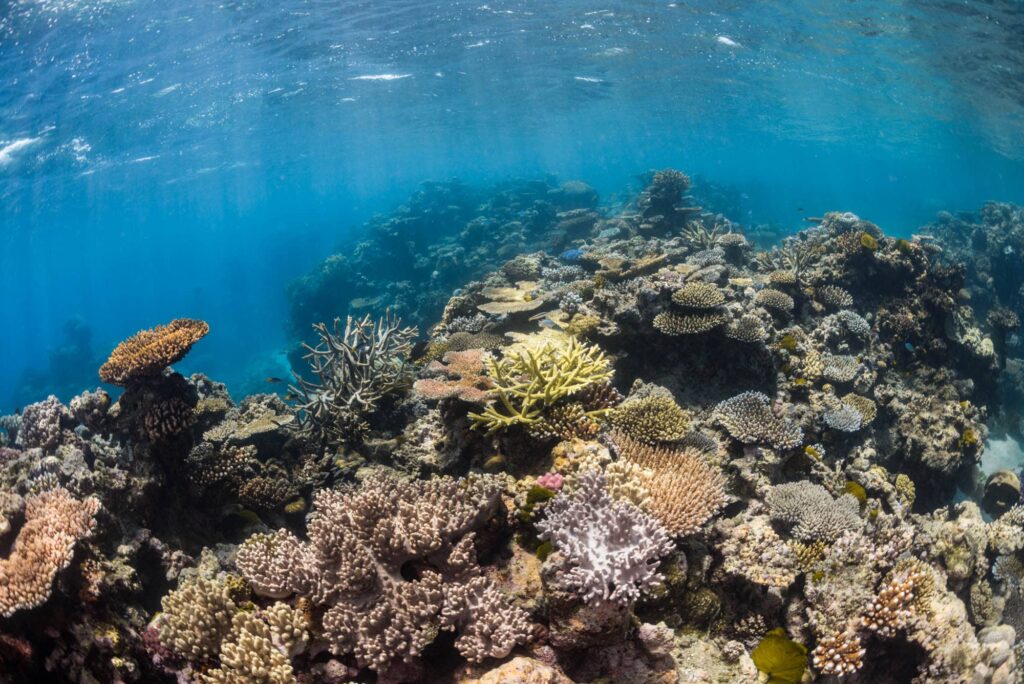
The Trip Home:
The journey back is when photo sales begin. Each boat handles this differently; some use iPads for passengers to view their photos, while others rely on a single laptop. A good memory for faces is really helpful here. Selling is straightforward: present the prices, and customers decide how many photos to purchase. In my experience, I’ve found that exceptional photos almost sell themselves. Being personable and patient is essential, as guests have varying budgets. I tried to empathize and adapt to their financial situations. Ultimately, making any sale is better than none. Commission policies vary by company, at Calypso Reef Cruises I never made a commission but I do believe photographers should earn commissions for their sales. However, that decision rests with each company.
Final Notes:
Working as an underwater photographer at the Great Barrier Reef is both exhausting and incredibly rewarding. Like any job, it has its ups and downs, but few can say they earn a living capturing the Reef’s stunning beauty. This career is a fantastic pursuit for those passionate about photography and the reef. My own experience on dayboats led me to start my underwater photography business. You can check out my reef photography prints for home decor here or explore my portrait photography site for special occasions like pregnancies or weddings. Starting this business was tough, but the fulfillment and potential rewards have been completely worth it. My journey began with Calypso, and it’s inspired me to follow my passion. If you’re passionate about something, dive in and chase it!
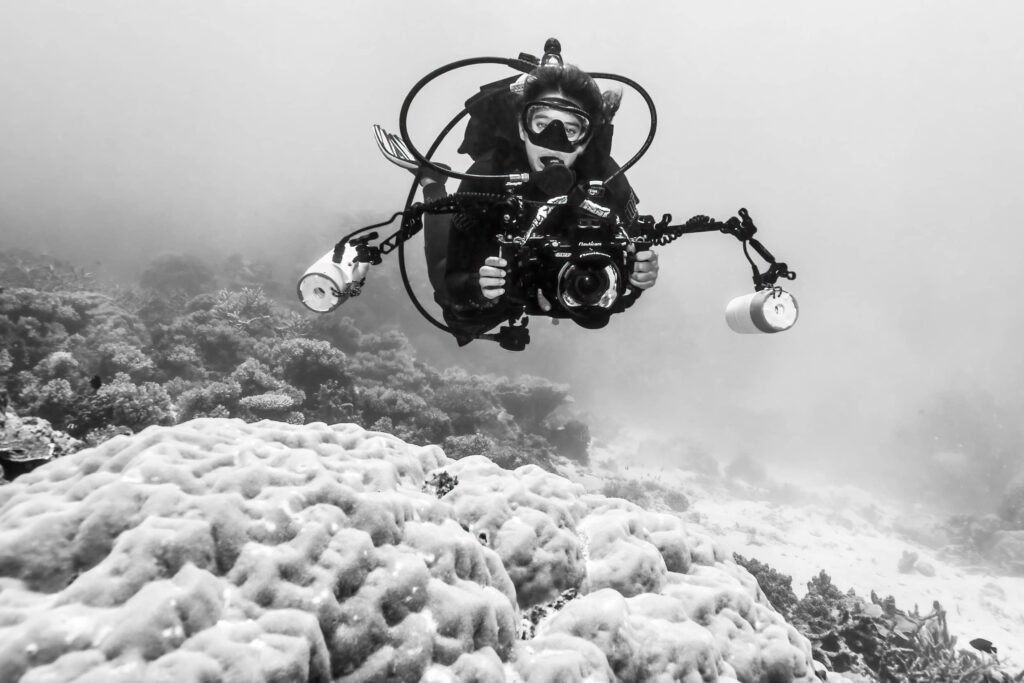
Who Hires Underwater Photographers:
If you are keen on exploring this career path, here’s a list of companies in Cairns and Port Douglas known for employing underwater photographers:
Calypso Reef Cruises: https://www.calypsoreefcruises.com/
Reef Magic: https://www.reefmagic.com.au/
Calypso Productions: https://www.calypsoproductions.com.au/
InDepth: https://www.indepthvideo.com.au/
Scubabo: https://cairns.scubabo.com/photograhy-internship/
Mike Ball: https://www.mikeball.com/
Passions of Paradise: https://passions.com.au/
Down Under Cruise and Dive: https://downundercruiseanddive.com.au/
Divers Den: https://www.diversden.com.au/

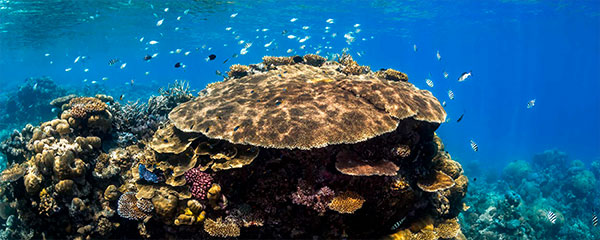
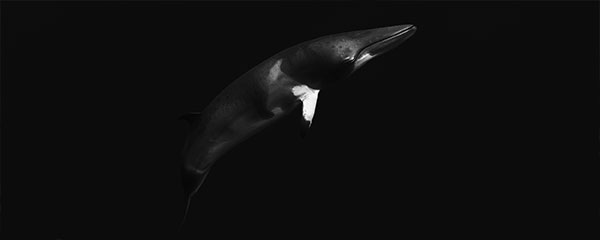
0 Comments